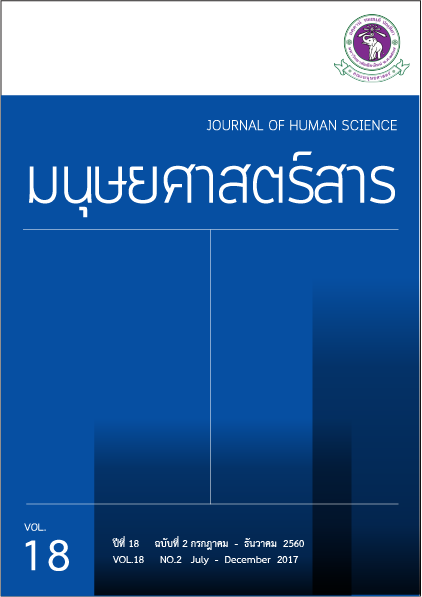ขบวนการครูบาศรีวิไชย เงินตรา บุญบารมี บนความเปลี่ยนแปลง ทางเศรษฐกิจของล้านนา
Main Article Content
บทคัดย่อ
ขบวนการครูบาศรีวิไชยเป็นปรากฏการณ์ทางการเมืองและวัฒนธรรมที่สำคัญในเขตภาคเหนือตอนบน (ล้านนา) ในช่วงครึ่งหลังของพุทธศตวรรษที่ 25 ซึ่งเป็นช่วงเวลาที่เกิดความเปลี่ยนแปลงทางการเมืองเศรษฐกิจ และสังคมอย่างกว้างขวางในล้านนาภายหลังการรวมอำนาจเข้าสู่ศูนย์กลางของรัฐบาลสยาม บทความชิ้นนี้มุ่งศึกษาขบวนการครูบาศรีวิไชยในฐานะผู้กระทำทางเศรษฐกิจในห้วงเวลาดังกล่าว รวมถึงศึกษาความสัมพันธ์ระหว่างการเปลี่ยนแปลงทางเศรษฐกิจกับมโนทัศน์ที่เกี่ยวเนื่องกับการทำบุญในขบวนการครูบาศรีวิไชย โดยศึกษาผ่านเอกสารชั้นต้นที่สำคัญสองชิ้นซึ่งเขียนโดยผู้ที่มีความสัมพันธ์ใกล้ชิดกับครูบา-ศรีวิไชย จากการศึกษาพบว่าขบวนการครูบาศรีวิไชยกลายเป็นศูนย์กลางทางเศรษฐกิจแบบใหม่รูปแบบหนึ่ง คือ “ตลาดเคลื่อนที่” ตามสถานที่ต่างๆ ซึ่งขบวนการครูบาศรีวิไชยเดินทางไปก่อสร้างถาวรวัตถุ ตลาดดังกล่าวเป็นทั้งตลาดแรงงานและตลาดสินค้าที่เอื้อประโยชน์ให้กับทั้งชนชั้นนำ พ่อค้า และราษฎรสามัญ ขณะเดียวกันการขยายตัวของระบบเศรษฐกิจแบบเงินตราที่มีผลตอบแทนเป็นรูปธรรมก็สอดรับกับอุดมการณ์ทางศาสนาของขบวนการครูบา-ศรีวิไชยที่เน้นการสะสมบุญบารมีที่ถูกทำให้เป็นรูปธรรมและมองเห็นได้ ขบวนการครูบาศรีวิไชยจึงทำให้มโนทัศน์เรื่องการทำบุญเป็นสิ่งที่มองเห็นได้และยังส่งผ่านไปสู่สาธารณชนด้วยการใส่ชื่อบุคคลที่ทำบุญผ่านระบบการพิมพ์เผยแพร่ การทำบุญในขบวนการครูบาศรีวิไชยจึงไม่ได้เป็นเพียงแหล่งสะสมบุญแต่ยังเป็นแหล่งสะสมทุนทางสังคมให้แก่กลุ่มพ่อค้าคหบดีในฐานะผู้อุปถัมภ์ศาสนารายใหม่ด้วย นอกจากนี้ขบวนการครูบาศรีวิไชยยังก่อให้เกิดการแสวงบุญที่ไม่จำกัดเฉพาะการเดินทางไปยังสถานศักดิ์สิทธิ์แต่หมายรวมถึงการแสวงบุญผ่านตัวบุคคลด้วย อันหมายถึงครูบาศรีวิไชยในฐานะตนบุญ


